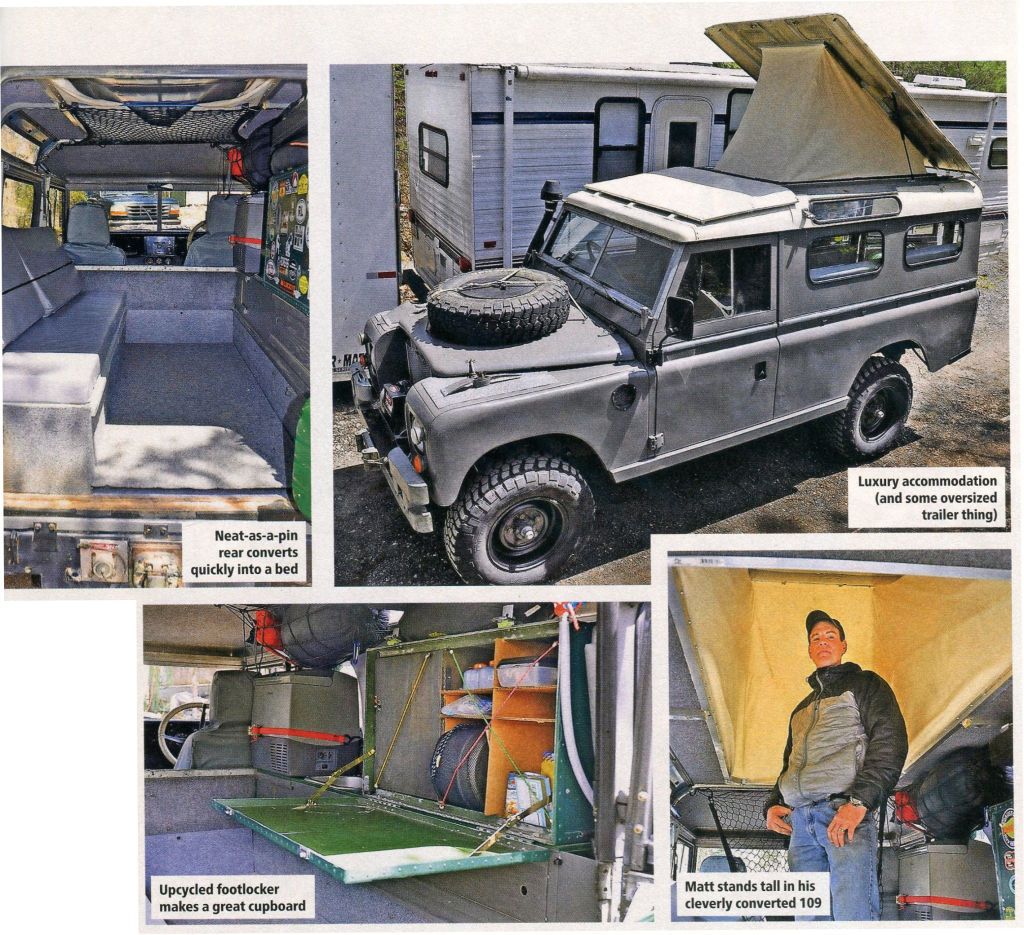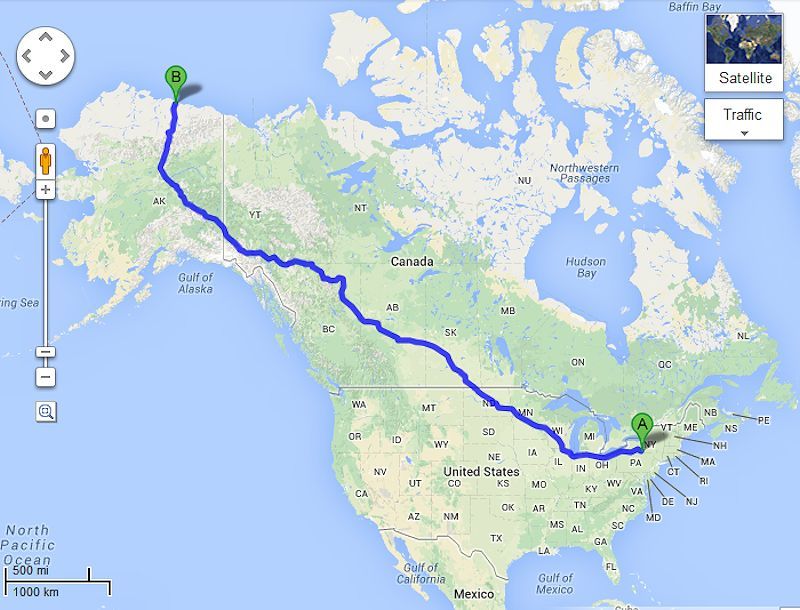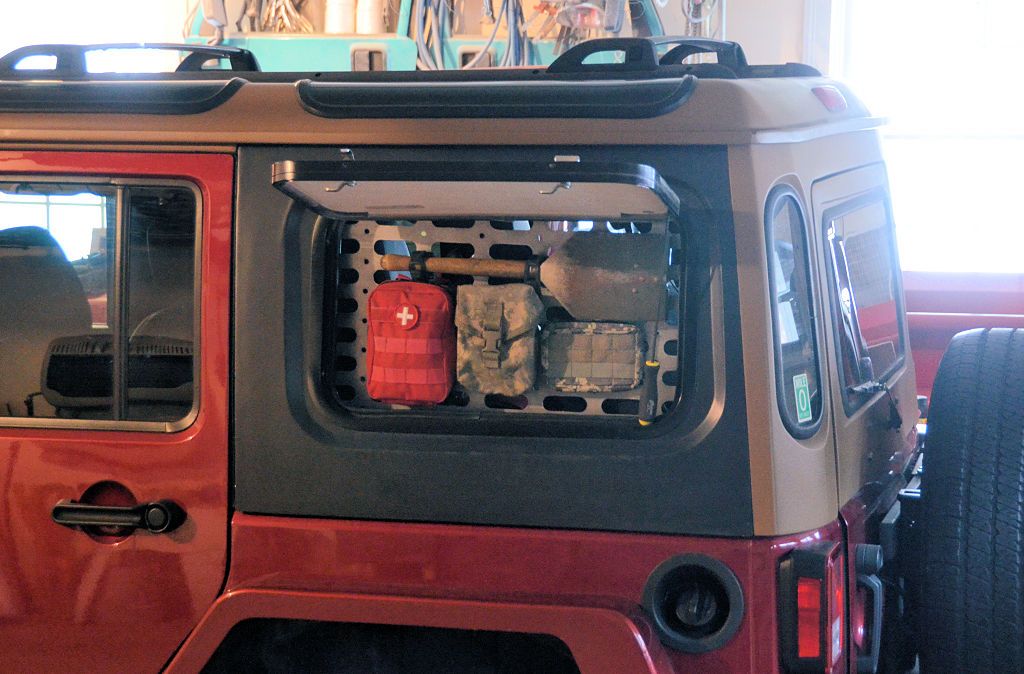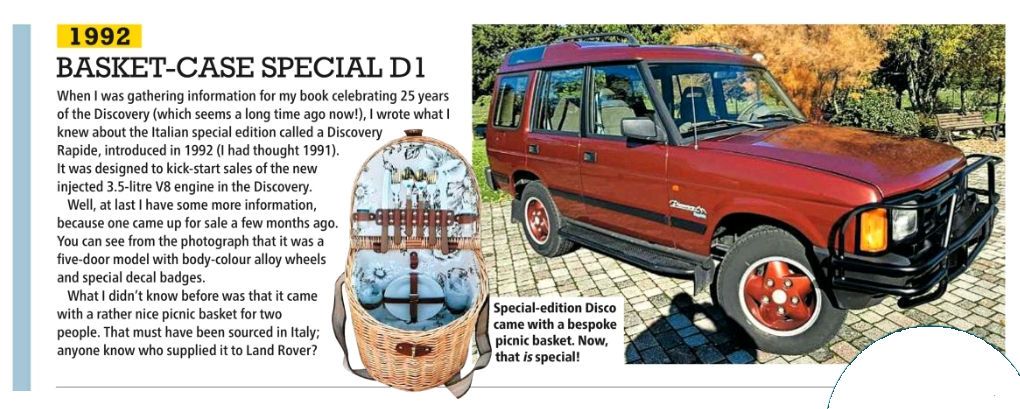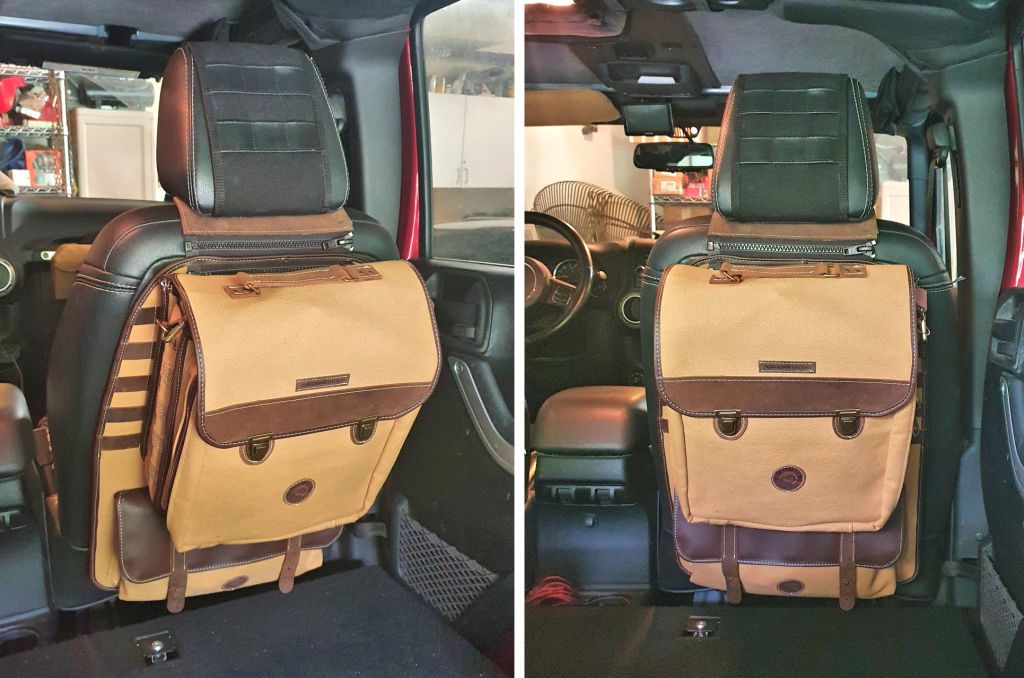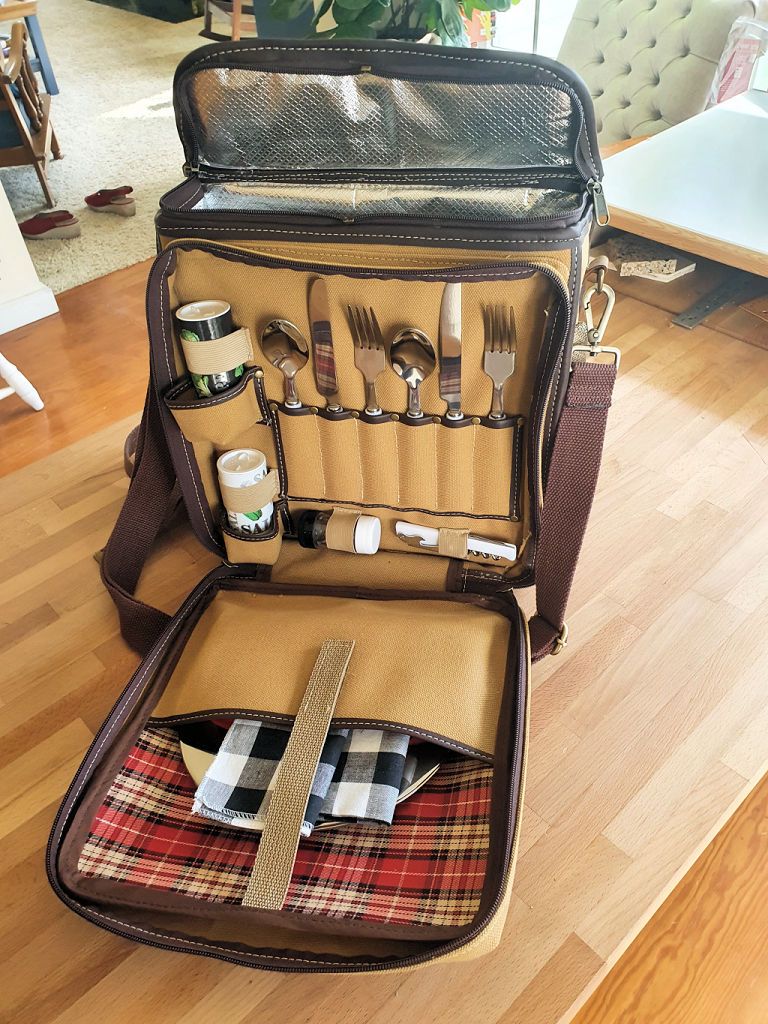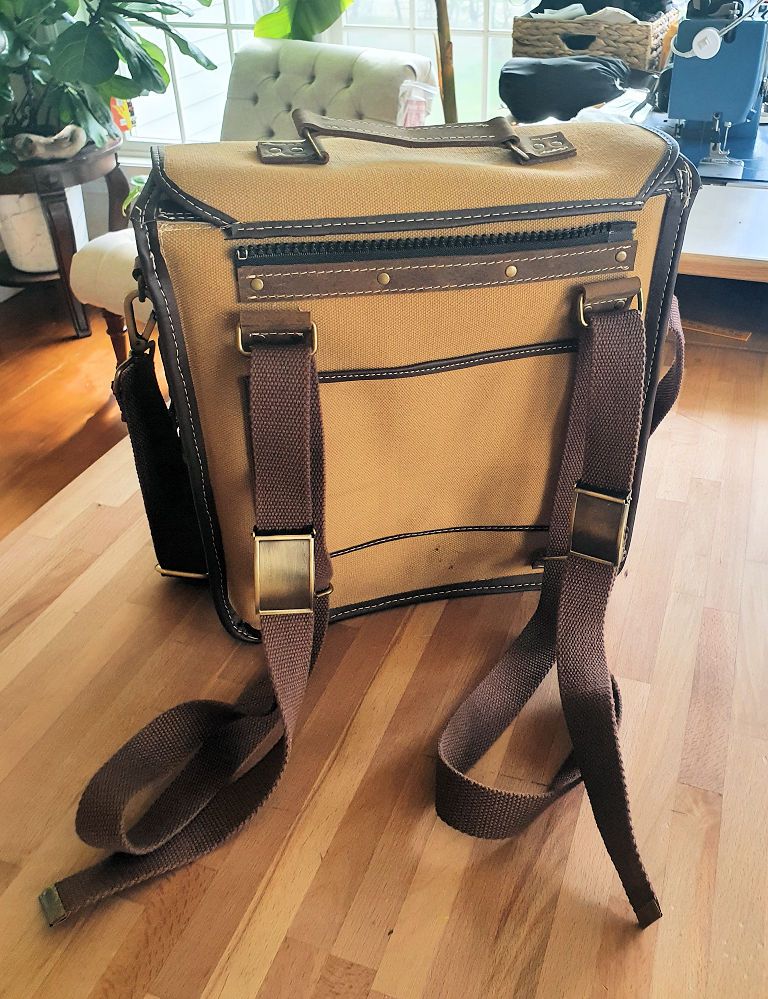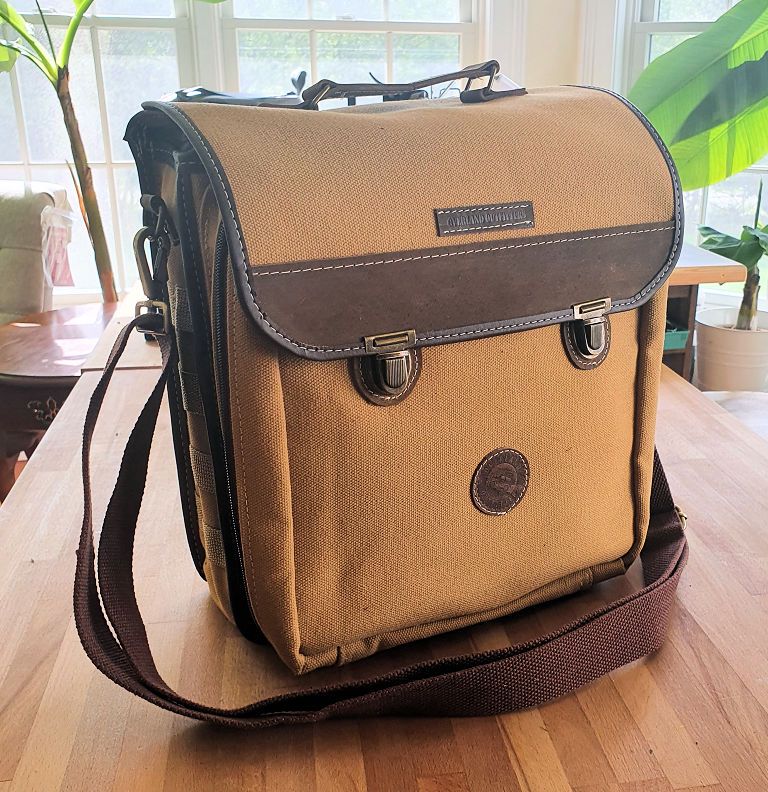jscherb
Expedition Leader
This is from another article in the June issue of Land Rover Owner; the article was entitled "My World-Wide Web" but a more accurate title might be "My Headache Web" - the idea behind this net is to keep cargo from hitting the driver or passenger if it moves around. The author says the net is "in the event of carrying too much speed and lurching over a desert dune or even being involved in an accident, I don't want to be clobbered on the back of the head by a missile in the shape of an airborne box of spares or a Hi-Lift jack that has broken free." He also said a key design criteria was that "the net should be easily removable with quick release lock 'n' load fasteners that click into securing rails." A few photos from the article:
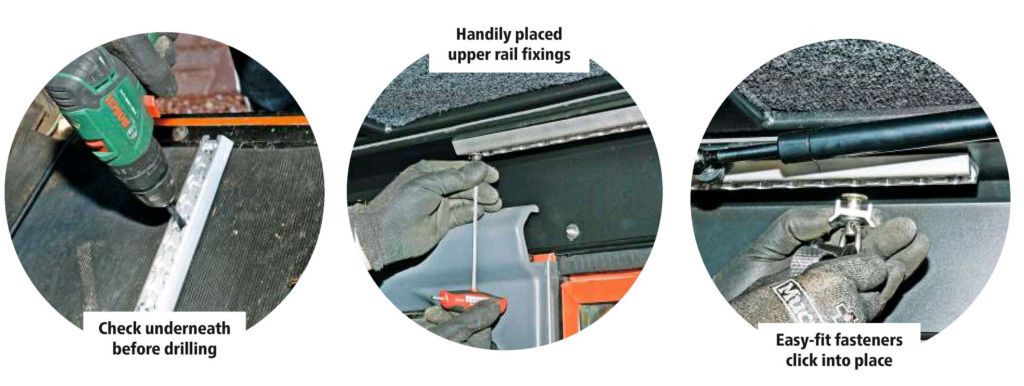
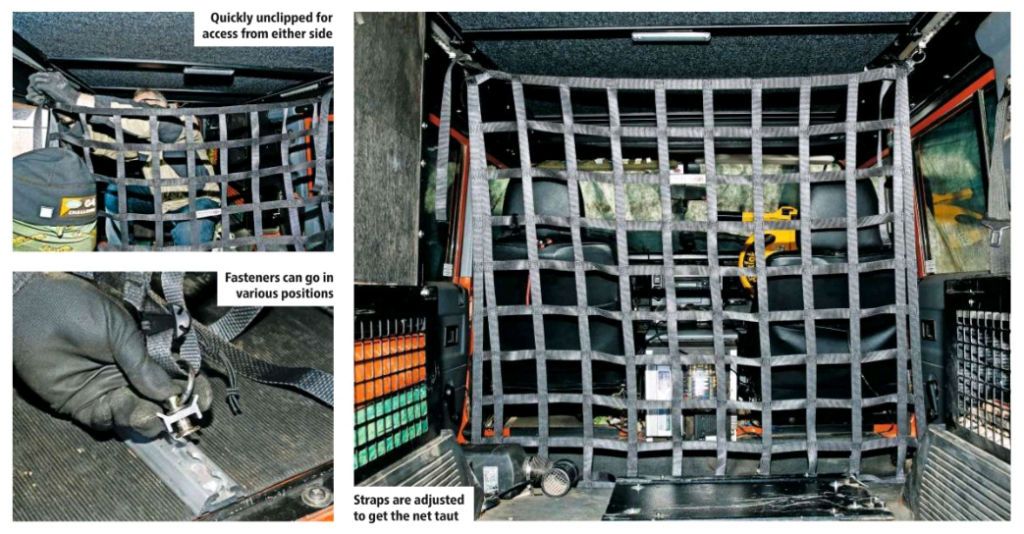
The cargo rails that the net secures to make the net adjustable for different loads, which is a nice feature, and as he said, it's quick and easy to remove the net.
He says he bought the net for 185 pounds (about $260), but web nets like that are easy to make, all you need is a stapler and a sewing machine and only very basic sewing skills. Part of the reason I posted this was to show how webbing nets like this can easily be made at home:
1. Figure out how much webbing you need and acquire it. There are lots of sources on eBay for webbing of various widths and colors. I recommend polyester for the best combination of strength and UV resistance. Polypropylene is less expensive but much less UV resistant; nylon is stronger but also less UV resistant.
2. Lay out the net on the floor and use an ordinary office stapler to join the webbing at all places where it crosses.
3. Sew all the cross points and when the sewing is done, remove the staples. Any sewing machine should be able to handle sewing through two thicknesses of ordinary polyester webbing, and you don't have to be an expert at sewing - use a heavy black polyester thread and it will blend in with the webbing so your stitching doesn't have to be pretty.
I've done a number of webbing nets this way, here's one I did not too long ago:
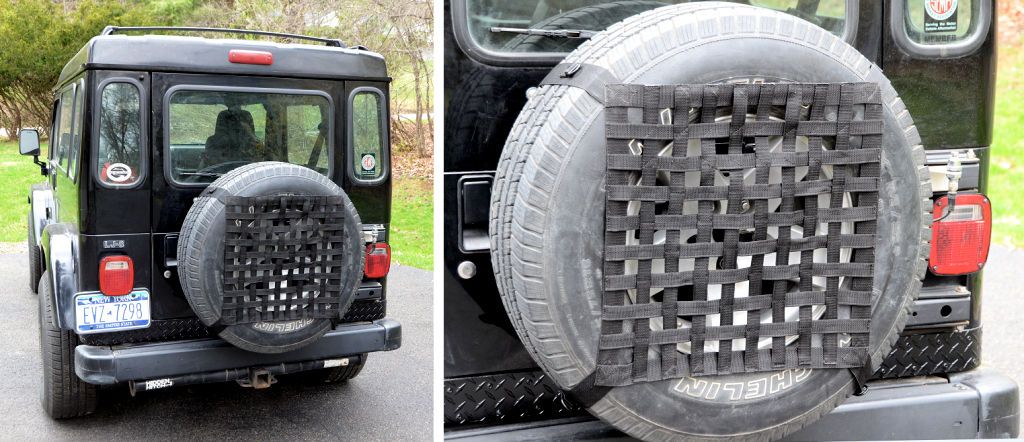
I built the net as part of my rear cargo/trash bag project:
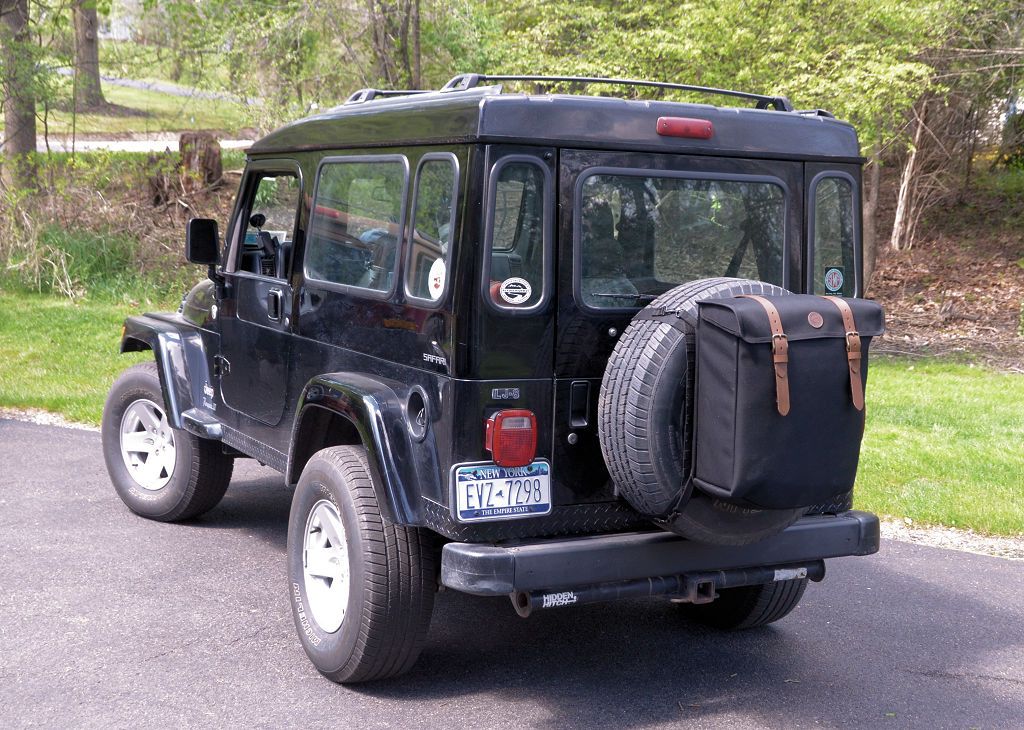
I didn't really need the full net for this application but the net makes the space on the spare more useful because it can hold Molle pouches too. Molle pouches on the spare, at least up here in the northeast, are only a good idea on nice days since most Molle pouches are not weatherproof, but they could be useful on trail days for recovery gear or other necessary supplies.
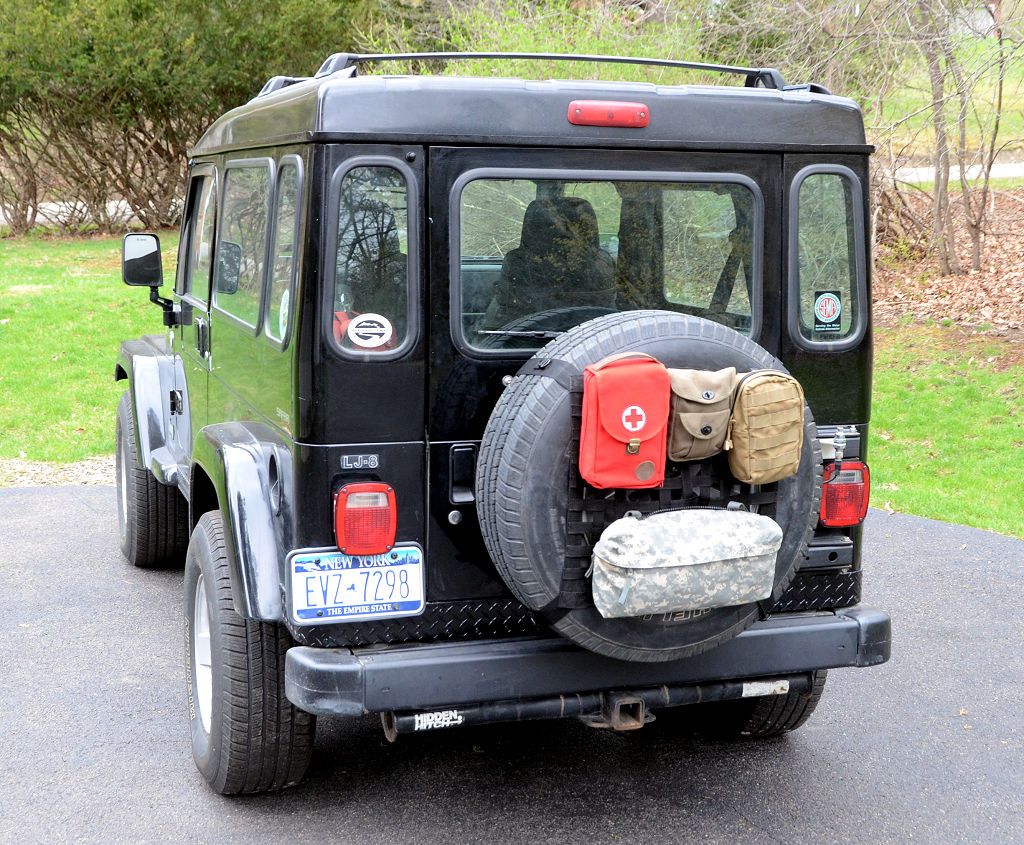


The cargo rails that the net secures to make the net adjustable for different loads, which is a nice feature, and as he said, it's quick and easy to remove the net.
He says he bought the net for 185 pounds (about $260), but web nets like that are easy to make, all you need is a stapler and a sewing machine and only very basic sewing skills. Part of the reason I posted this was to show how webbing nets like this can easily be made at home:
1. Figure out how much webbing you need and acquire it. There are lots of sources on eBay for webbing of various widths and colors. I recommend polyester for the best combination of strength and UV resistance. Polypropylene is less expensive but much less UV resistant; nylon is stronger but also less UV resistant.
2. Lay out the net on the floor and use an ordinary office stapler to join the webbing at all places where it crosses.
3. Sew all the cross points and when the sewing is done, remove the staples. Any sewing machine should be able to handle sewing through two thicknesses of ordinary polyester webbing, and you don't have to be an expert at sewing - use a heavy black polyester thread and it will blend in with the webbing so your stitching doesn't have to be pretty.
I've done a number of webbing nets this way, here's one I did not too long ago:

I built the net as part of my rear cargo/trash bag project:

I didn't really need the full net for this application but the net makes the space on the spare more useful because it can hold Molle pouches too. Molle pouches on the spare, at least up here in the northeast, are only a good idea on nice days since most Molle pouches are not weatherproof, but they could be useful on trail days for recovery gear or other necessary supplies.


